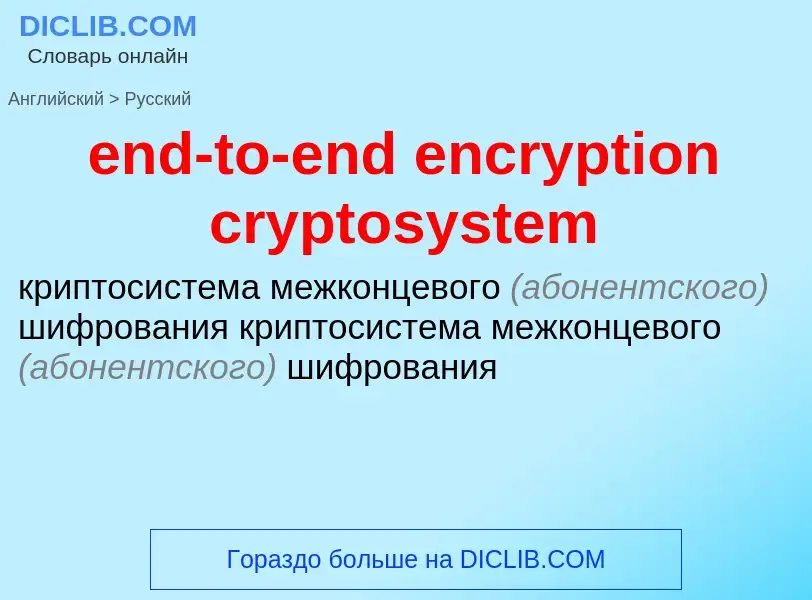Translation and analysis of words by ChatGPT artificial intelligence
On this page you can get a detailed analysis of a word or phrase, produced by the best artificial intelligence technology to date:
- how the word is used
- frequency of use
- it is used more often in oral or written speech
- word translation options
- usage examples (several phrases with translation)
- etymology
end-to-end encryption cryptosystem - translation to russian
Definition
Wikipedia
End-to-end encryption (E2EE) is a security method that keeps chats and messages secure. The end-to-end encryption is a system of communication where only the users communicating can read the messages. In principle, it prevents potential eavesdroppers – including telecom providers, Internet providers, malicious actors, and even the provider of the communication service – from being able to access the cryptographic keys needed to decrypt the conversation.
End-to-end encryption is intended to prevent data being read or secretly modified, other than by the true sender and recipient(s). The messages are encrypted by the sender but the third party does not have a means to decrypt them, and stores them encrypted. The recipients retrieve the encrypted data and decrypt it themselves.
Because no third parties can decipher the data being communicated or stored, for example, companies that provide end-to-end encryption are unable to hand over texts of their customers' messages to the authorities.
In 2022, the UK's Information Commissioner's Office, the government body responsible for enforcing online data standards, stated that opposition to E2EE was misinformed and the debate too unbalanced, with too little focus on benefits, since E2EE "helped keep children safe online" and law enforcement access to stored data on servers was "not the only way" to find abusers.

